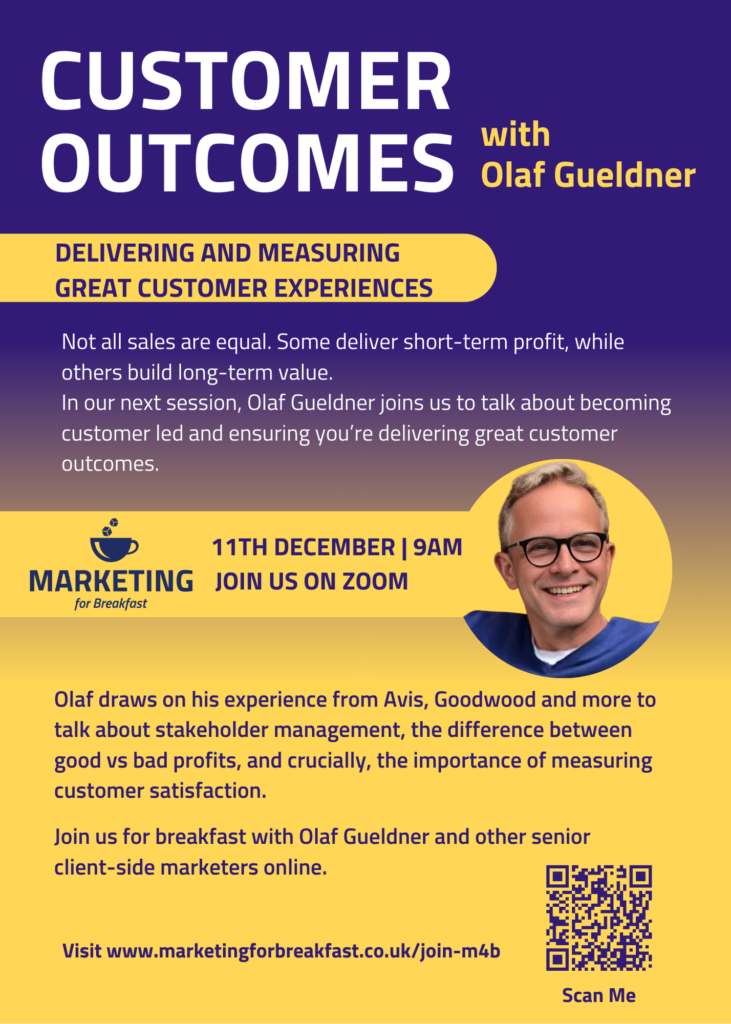Not all sales are equal. Some deliver short-term profit, while others build long-term value.
In our latest Marketing for Breakfast webinar, we had the pleasure of hosting Olaf Gueldner, who shared invaluable insights on transforming customer experiences and driving profitability. Here’s a summary of the key points discussed:
Understanding profitable customers
Olaf emphasised the importance of identifying both current and future profitable customers. Knowing where your profit comes from is crucial for strategic planning.
Addressing customer pain-points
Understand what customers like and dislike, including their opinions on competitors. Olaf recommended starting with qualitative focus groups before moving to quantitative research.
Make your offerings easy to navigate
When Olaf joined car rental giant Avis, their cars were listed A-Z, which was of little benefit to customers looking for a choice of cars suitable for four passengers and luggage.
Reorganising this into small, medium and large matched customer needs far better and made the buying experience easier.
Gaining buy-In for changes
Introducing changes within a business requires a mix of short-term wins and long-term commitment. This can be particularly challenging if your staff have been with the business for a long time and are used to doing things in a certain way.
Get a few key people on board and use them as an example to influence others.
Defining good and bad profit
Where are your profits coming from? Good profit comes from customers having a positive experience and being willing to pay more. On the other hand, bad profit is made when customers have a negative experience. Yet each type has a different impact on future customer behaviour.
Enhancing the customer experience
It’s vital to fix customer service issues before addressing product problems. Olaf highlighted the importance of being fully invested in customer service to demonstrate that you ‘walk the talk’.
Net Promoter Score (NPS) and its impact on profit
Understanding NPS
NPS is a key metric for gauging customer satisfaction. Asking “How likely are you to recommend this event/product to others?” identifies your promoters (scores 9-10), neutrals (score 8), and detractors (scores 7 and below). But most companies fail to make use of that data beyond the top-line number. If you apply it to each customer record, you build up a far richer picture of customer value.
Impact on repeat purchases
Higher NPS scores often correlates with higher repeat purchases. And addressing issues can result in a higher NPS more than if everything went smoothly initially.
Improving NPS
Olaf shared that comparing NPS to offline data can help target improvements. Incentivising referrals and addressing low ratings can positively influence NPS. Timing is also crucial; do you want immediate feedback, or to give the customer some time to assess their purchase?
Olaf’s insights provided a comprehensive look at how businesses can transform customer experiences and drive profitability.
If you missed the session, look out for content from the session on our LinkedIn page here: Marketing for Breakfast LinkedIn page

Recent Comments